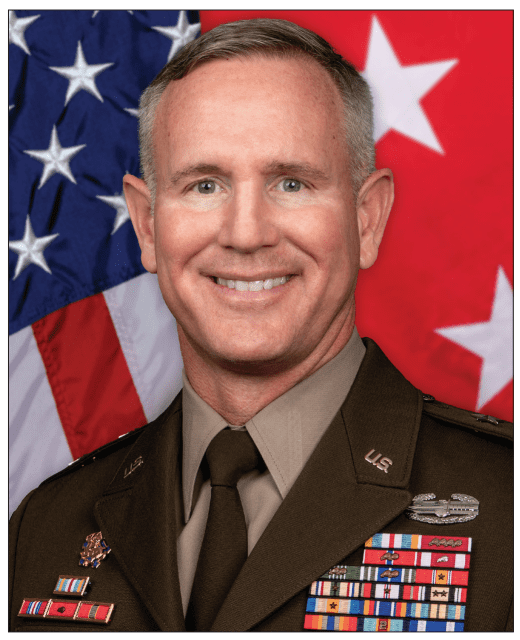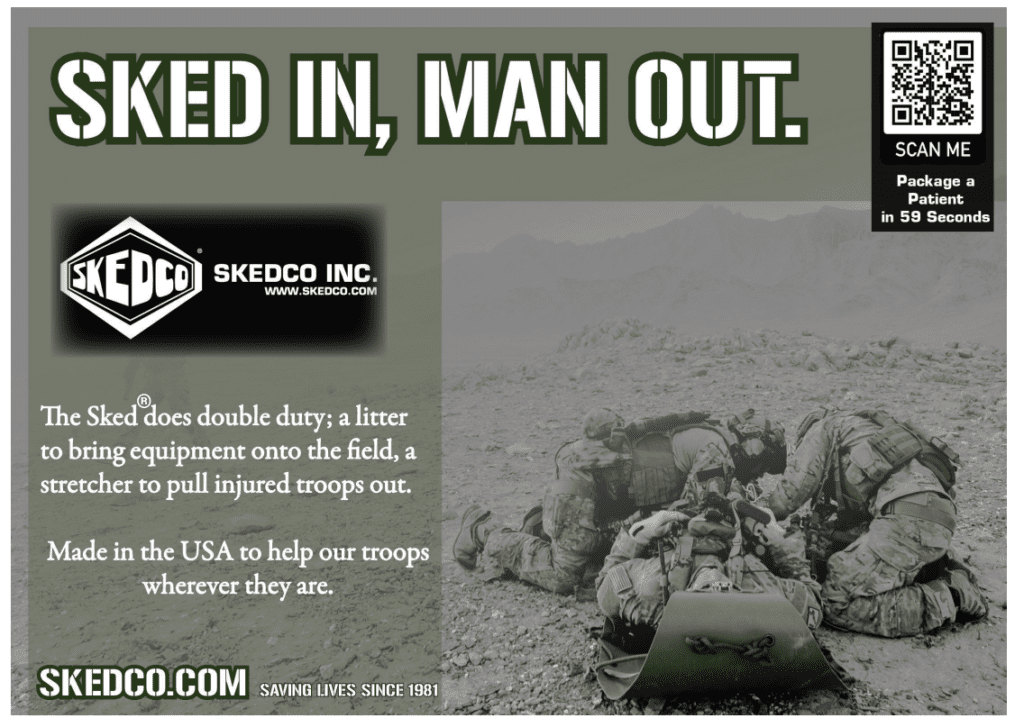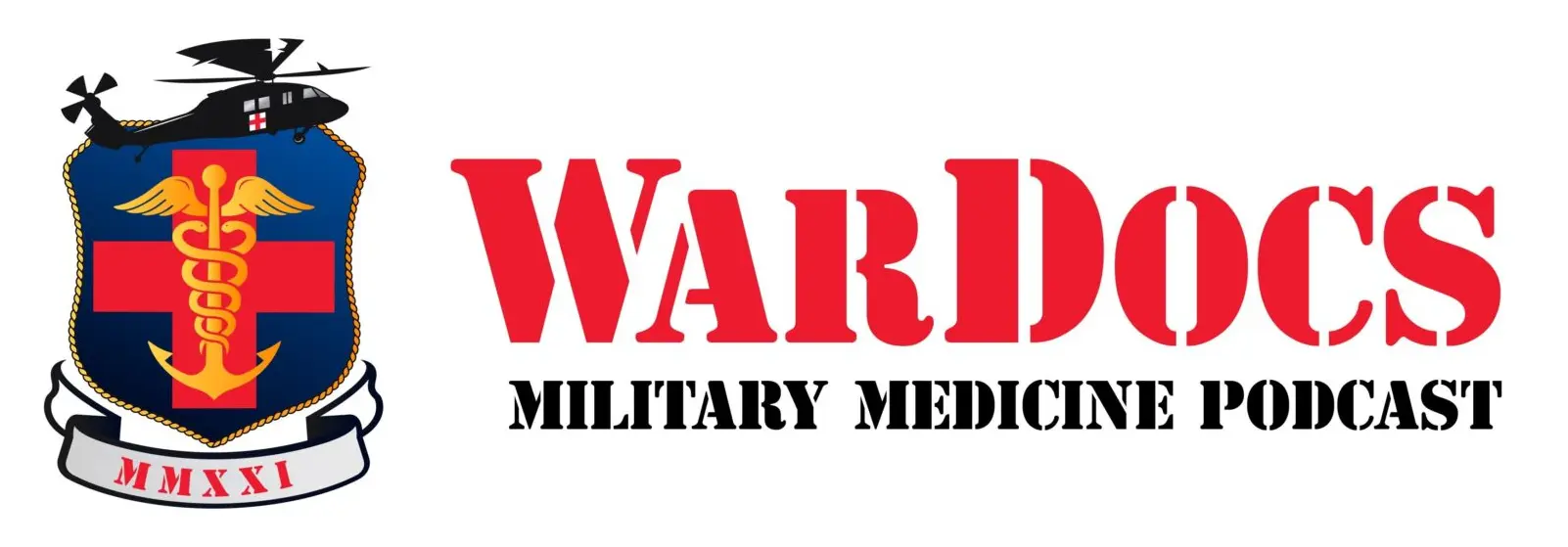
FUELING CONTINUOUSTRANSFORMATION THROUGHCONCEPT-DRIVEN S&T
Major General (P) John M. Cushing is a third-generation Soldier, an armor officer by trade and a graduate of the United States Military Academy at West Point, Class of 1993. He has held numerous command and staff assignments during his 30-year career and recently served as the deputy commanding officer for operations at the United States Army Recruiting Command. Today, MG Cushing serves as the commanding general of the U.S. Army Combat Capabilities Development Command, known as DEVCOM. In this role, he leads more than 10,000 civilian scientists and engineers who provide Army Futures Command with the S&T expertise necessary to transform our Army and ensure war-winning future readiness.
Armor & Mobility had the opportunity to speak with MG John Cushing, DEVCOM Commanding General, regarding key focus areas supporting parent organization Army Futures Command in the year since he has taken charge.
A&M: You have been on the ground at DEVCOM for just over a year. How have your impressions of the command changed in that time?
MG Cushing: Before I even arrived at DEVCOM, I knew the command’s workforce was talented. But in the year I’ve had the honor of serving as the commanding general of this organization, the term “expert” doesn’t seem to come close to covering the depth and breadth of knowledge possessed by the professionals who comprise DEVCOM. Every day, I am in awe of their passion, ingenuity, attention to detail, and expertise.
I tell this story often, but shortly after I arrived, I had the opportunity to meet a young scientist whose focus area was obscurants, or what most of us would call smoke. To be honest, I had not given much thought to the science behind smoke – I just knew well enough to not be downwind of it. She proceeded to educate me on cutting-edge research into obscurants, including whether we can use obscurants to protect not only our visual signature on the battlefield, but obscure our electromagnetic signature and disrupt the spectrum for our adversaries.
Not only was this scientist’s technical expertise astounding, but her passion and energy about such a niche specialty was contagious. You could not help but be inspired by her and what she hoped to achieve on behalf of the Soldier. She represents one of thousands of experts within DEVCOM we have across a diverse set of competencies all dedicated to solving complex problems and rapidly developing next-generation military technologies.
I have also grown to appreciate how engrained this command is within the entire scope of the Army Futures Command enterprise. We are the largest subcomponent of AFC, and we are at the center of a global ecosystem of technological innovation and scientific exploration – whether we are leading the research or collaborating with industry, academia or our allies to develop mutually beneficial technologies. Center to help ground Army concepts in scientific reality based on our
foundational research.
We work alongside AFC’s Cross Functional Teams, as well as the Army Applications Lab to transition developing technologies to programs of record and enable the realization of Army Modernization Priorities. DEVCOM engineers work extensively with the Program Executive Offices to address technological and engineering challenges during the acquisition and experimentation processes. And our research and development centers also provide a significant amount of lifecycle engineering to rapidly respond to emerging operational needs and support currently fielded equipment.
Meanwhile, our analysis center provides critical systems assessments in lethality, operational impact, risk, vulnerability, and user acceptance analysis that informs better decision-making across the materiel lifecycle.
That is why I really do think DEVCOM serves as the Army’s leader and integrator within a global ecosystem of technological innovation and scientific exploration; we’re intricately tied to AFC’s efforts to get after Army Modernization, and now Transformation.
At the end of the day, DEVCOM provides science, technology, engineering and analytical expertise that underpins Army Transformation from concept development to materiel sustainment.
A&M: As the Army operates and maintains overmatch across all domains – land, sea, air, space, with the growing need for force modernization to address a dynamic threat environment affecting security in all phases of the lifecycle, how is DEVCOM embracing a necessary digital transformation to win decisively in the Large Scale Combat Operations of a Multi-Domain Operations future?
MG Cushing: When it comes to digital transformation, we’re looking at it primarily from the perspective of how will our S&T work support the digital transformation of our operational Army to give them the edge against our adversaries? We must explore ways to improve existing tools and develop new capabilities that will help Soldiers make sense of the nearly unfathomable amount of data coming in from thousands of sensors on the battlefield. This includes how we integrate artificial intelligence and machine learning into our systems, that will help take some of the cognitive burden off Soldiers and help them quickly process all that data in meaningful ways.
We’re leaning hard into Next Generation Command and Control because the Army’s #1 priority when it comes to transformation is the network. We need a robust network capable of keeping up with the vast amounts of data that need to be processed to enable commanders to make faster decisions and adapt in complex and continuously evolving operations. Our work in this space includes software, hardware, and a larger data-centric C2 architecture that is truly a team effort across AFC and our industry partners.There’s certainly little point in creating a network architecture capable of enabling Next Generation C2 if we can’t protect that network from increasingly sophisticated adversaries. We have a lot of talented engineers working in the cybersecurity and electronic warfare spaces to ensure we can protect our network, manage our use of the electromagnetic spectrum and detect and exploit adversary vulnerabilities.
A&M: What are some of the biggest challenges facing the Army S&T community?
MG Cushing: It is no secret our Army and our society are facing some could not accomplish our mission without them, nor would we want to, because we know our ideas are made better with the insights of others.
But we also recognize that opening our labs, opening our projects, sharing our intellectual property – it can also make us vulnerable to our adversaries. We must find a balance, to ensure the benefit of collaboration outweighs the risk of our IP ending up in the wrong hands.
We’ll find that balance by remaining flexible, continuously evaluating how we vet our partners and remaining vigilant in terms of what information we are willing to share and when in the technology development process.
A&M: How does DEVCOM ensure the capabilities it develops are operationally relevant and something Soldiers in the field will need and understand how to use?
MG Cushing: This is a great question, because DEVCOM has some remarkable responsibilities in the Army S&T space. We are exploring truly groundbreaking, emerging science that might not have an obvious military application to the untrained eye. We are working diligently to advance research that will provide the Army with new, war-winning capabilities. And we are engineering solutions and incremental improvements to currently fielded equipment. How we determine what is operationally relevant and user-friendly will vary slightly depending on where we are within that timeline.
MG John M. Cushing
Commanding General
U.S. Army Combat Capabilities Development Command Aberdeen Proving Ground, MD
You would be hard-pressed to find a piece of Army Transformation, particularly within AFC’s mission space that DEVCOM does not contribute to in a meaningful way
A&M: What do you see as DEVCOM’s role within Army Transformation efforts led by Army Futures Command? What value does DEVCOM bring to that team?
MG Cushing: AFC’s priority is to work with teammates and partners to implement Continuous Transformation to ensure war-winning future readiness. We approach Army Transformation through the lens of three time periods: Transformation in Contact over the next 24 months, Deliberate Transformation tied to the POM cycle 2-7 years out, and Concept-Driven Transformation with implications for 2030 and beyond. These three time periods are inextricably linked because decisions about one have implications for the others.
As GEN Rainey has said, Army Transformation is not a relay race – there is no baton to pass off between technology developers, then to acquisition or logistics and sustainment. There is and must be constant feedback, and no one Army command truly owns the entirety of one step in the process.
For DEVCOM, that means there is no point within capability development or the materiel lifecycle where we can wipe our hands of a project and say ‘our work here is done.’ The DEVCOM enterprise spans one foundational research laboratory and seven applied research and development centers that also provide lifecycle engineering support. DEVCOM collaborates with our partners in AFC’s Futures and Concepts very real threats – from adversaries who do not necessarily play by the same rules that we do and others who don’t look like a typical nationstate adversary. Army S&T must keep pace with a rapidly changing global technological landscape. Never have bad actors had such easy access to weapons of war or the ability to conduct digital warfare.
It is our job to ensure American Warfighters never enter a fair fight and we provide them with combat capabilities so formidable, our adversaries will not entertain the risk of entering conflict with us.
Earlier, I mentioned Concept-Driven Transformation. For DEVCOM, this is where we are focusing on research with far-term applications. In this space, we need the benefit of risk acceptance and agility. Researchers must have the trust and ability to rapidly pursue emerging technologies and pivot just as quickly as technology evolves or does not pan out in the way we expected. We need to be able to fail early and fail cheaply in the process, rather than continue to put resources into a project simply because too much has already been invested.
Part of this ability to pivot, really comes down to fiscal agility, and GEN Rainey has talked about this quite a bit. The Army must develop requirements documents – which is where funding dollars follow – for capabilities rather than specific systems. This would work particularly well for smaller scale systems with overlap in the commercial sector.
There are developments going on in the commercial sector that are moving so fast and with such impact that the traditional way the Army funds R&D can never keep pace. By the time a promising technology was identified, the requirement was approved and funded, and we completed the multiyear effort necessary to develop, test, and start fielding a military-grade version of the system, the original technology would be well on the way to obsolescence. Our adversaries are not operating within a system like that, and simply put, we cannot afford to do that either
We must transform how we do business, to funding a capability portfolio rather than individual technologies that meet one specific requirement. This gives us the agility to invest our S&T dollars in ways that support various capability goals, enable us to pivot to keep pace with technological change, and more importantly, maintain the battlefield advantage for our Soldiers.
This fiscal agility will have impact across all Army S&T work and Army Transformation. For example, equally important is how Army S&T approaches Transformation in Contact, or how we drive real capability change for Soldiers right now. And as GEN Rainey says, it is about not letting perfection get in the way of good enough. S&T, and the larger Army, needs to get comfortable with identifying existing technologies that are worth fielding right now, rather than waiting for years of R&D them to advance further. In many cases, this not only gives Soldiers a vastly improved capability over what they currently have, but it provides us with real-world feedback on a newer capability to determine how to invest in its further development in ways that will have larger capability impacts based on the evolving operational environment.
Finally – I spend a lot of time thinking about how we protect the great ideas our Army S&T experts are developing. And I will say, this challenge is not unique to Army S&T, agencies across the federal government are grappling with how to balance collaboration with security, as are many private companies.
At DEVCOM, we know innovation is a team sport – it does not happen in silos. It requires constant collaboration with a diverse set of partners across a global ecosystem of innovators. Whether it is the defense industry, professors and students, small businesses, or our allies, we place great value in that network of partners – we It starts with an incredible relationship we have with the Futures and Concepts Center and their experts who work to develop concepts and requirements. We have worked hand-in-hand with FCC to develop Concept-Required Capabilities (CRCs) that will align to the new Army Warfighting Concept currently being drafted by our AFC partners.
The CRCs will summarize critical new and modified activities that future Army forces, Army formations, and the Institutional Army must be able to do to achieve future objectives as part of a Joint and multinational force that can dominate the land domain. For the team at DEVCOM, it will really help us better frame our research and development efforts in a way that ensures they support the way the Army anticipates it will fight on the future battlefield.
Looking at this through another lens, we also continue to invest in programs that directly connect DEVCOM scientists and engineers with our end user – the Soldier. Catalyst Pathfinder is a great example of this. Since 2021, Catalyst Pathfinder works to connect Soldiers, DEVCOM experts and our critical partners in academia to expedite our ability to develop solutions to problems identified by Soldiers themselves, at the point of need, which is extremely innovative.
Through this program, we have the opportunity to hear in realtime the operational challenges Soldiers are facing, work alongside them to develop prototypes for new capabilities and garner critical insights that help us refine our work to develop emerging technologies in support of Army modernization priorities.


